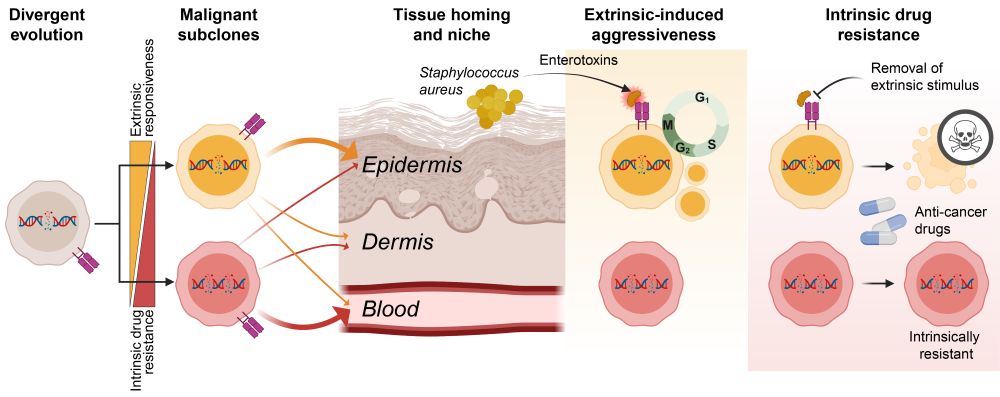

✅The answer: co-existing malignant subclones.
Let me walk you through our latest study investigating how divergent evolution drives adaptability, aggressiveness, and drug resistance of T cell cancer. 1/🧵
doi.org/10.1158/2159...
Thank you Cancer Discovery (@aacrjournals.bsky.social) for the beautiful title-page graphics!

Thank you Cancer Discovery (@aacrjournals.bsky.social) for the beautiful title-page graphics!
Bravo 👏👏👏
✅The answer: co-existing malignant subclones.
Let me walk you through our latest study investigating how divergent evolution drives adaptability, aggressiveness, and drug resistance of T cell cancer. 1/🧵
doi.org/10.1158/2159...

Bravo 👏👏👏
✅The answer: co-existing malignant subclones.
Let me walk you through our latest study investigating how divergent evolution drives adaptability, aggressiveness, and drug resistance of T cell cancer. 1/🧵
doi.org/10.1158/2159...

✅The answer: co-existing malignant subclones.
Let me walk you through our latest study investigating how divergent evolution drives adaptability, aggressiveness, and drug resistance of T cell cancer. 1/🧵
doi.org/10.1158/2159...
✅The answer: co-existing malignant subclones.
Let me walk you through our latest study investigating how divergent evolution drives adaptability, aggressiveness, and drug resistance of T cell cancer. 1/🧵
doi.org/10.1158/2159...

✅The answer: co-existing malignant subclones.
Let me walk you through our latest study investigating how divergent evolution drives adaptability, aggressiveness, and drug resistance of T cell cancer. 1/🧵
doi.org/10.1158/2159...

In Sézary Syndrome (SS), it turns out they can!
Want to know more? I will summarize some highlights from our study below.
doi.org/10.1182/bloo...

In Sézary Syndrome (SS), it turns out they can!
Want to know more? I will summarize some highlights from our study below.
doi.org/10.1182/bloo...
Itay Tirosh & Mario L. Suva
www.sciencedirect.com/science/arti...

Itay Tirosh & Mario L. Suva
www.sciencedirect.com/science/arti...
go.bsky.app/GmS1cH

go.bsky.app/GmS1cH

